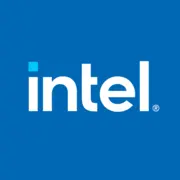Intel Processor U300

Intel Processor U300: Compact Power for Everyday Tasks
March 2025
Introduction
Low-power laptop processors are the foundation of modern ultrabooks and budget laptops. The Intel Processor U300, introduced in 2024, is the company's answer to the growing demand for a balance between performance and battery life. With the codename Raptor Lake and a 10nm technology, this chip promises efficiency for everyday tasks. But how does it perform in practice? Let's delve into the details.
Architecture and Process Technology
Hybrid Core Structure
The U300 utilizes a hybrid Raptor Lake architecture, combining Performance-cores (P-cores) and Efficient-cores (E-cores). However, the configuration is unusual: 1 P-core with Hyper-Threading (2 threads) and 4 E-cores (4 threads), totaling 5 cores and 6 threads. The P-core operates at a base frequency of 1.2 GHz with turbo boost up to 4.4 GHz, while the E-cores can reach up to 3.3 GHz.
Cache and Graphics
An 8MB L3 cache accelerates processing of frequently used data. Integrated graphics consist of Intel UHD Graphics (Xe-LP architecture) with 48 Execution Units (EUs), which is typical for the U-series. This solution is suitable for basic multimedia and light gaming, but not for AAA titles.
10nm Process Technology
Despite Intel's transition to 'Intel 7' node standards (equivalent to 7nm) in top-tier chips, the U300 maintains a 10nm process, reducing production costs and making it accessible for mass-market devices.
Power Consumption and TDP
TDP 12-15W: A Balance Between Power and Battery Life
With a TDP of 12-15W, the U300 can be installed in thin laptops with passive or compact active cooling solutions. In idle mode, power consumption drops to 2-3W thanks to technologies like:
- Intel Speed Shift — dynamic frequency management.
- C-States — shutting down unused cores.
- Dynamic Tuning — adapting to workload in real-time.
This makes the chip cooler than its predecessors (e.g., Alder Lake U-series), reducing fan noise.
Performance in Real Tasks
Office Work and Multitasking
- Geekbench 6: 1813 (Single-Core), 4176 (Multi-Core). For comparison, the AMD Ryzen 5 7540U (Zen 4) scores around ~1900/5200, while the Apple M2 achieves ~2200/8500. The U300 falls short in multi-threading due to its limited core count, but it suffices for Word, Excel, and browsing with over 10 tabs open.
- Turbo Mode: Under short bursts of load (e.g., opening a heavy PDF), the P-core reaches 4.4 GHz, reducing response times. However, under prolonged tasks (like video rendering), the frequency of E-cores stabilizes around 2.8-3.0 GHz to prevent overheating.
Multimedia
- 4K Video: Playback in VLC or YouTube is smooth thanks to the Intel Quick Sync decoder.
- Photo Editors: Adobe Lightroom (basic retouching) is manageable, but exporting 100 images takes about 20% longer compared to the Ryzen 5 7540U.
Gaming
- CS2: 720p, low settings — 40-50 FPS.
- Genshin Impact: 720p, 30 FPS with drops during combat.
- Indie Games (Hollow Knight, Stardew Valley) — 60 FPS without issues.
For serious gaming, an external GPU is necessary, but the U300 is not intended for that.
Use Case Scenarios
Who Is This Processor For?
1. Students and Office Workers: Document handling, Zoom conferences, streaming video.
2. Portable Device Users: Laptops weighing up to 1.3 kg (e.g., Acer Swift 3 or Lenovo IdeaPad Slim 5) with 8-10 hours of battery life.
3. Budget Buyers: Devices priced between $600-800.
Who Should Avoid It?
- Gamers and video editors: Weak multi-threading and graphics capabilities.
- Programmers working with heavy code compilation: Slower than the Ryzen 7 or Core i5 H-series.
Battery Life
Operating Time
With a battery capacity of 50 Wh (typical for ultrabooks), the U300 provides:
- 10-12 hours: Web surfing and office tasks (brightness at 150 nits).
- 6-7 hours: Watching YouTube at 1080p.
Energy-Saving Technologies
- Display Power Saving: Reduces screen refresh rate to 48 Hz when idle.
- Adaptix Dynamic Tuning: Optimizes core load in real-time.
Tip: Turn off Turbo Boost in Windows power settings to extend battery life by 15-20%.
Comparison with Competitors
1. AMD Ryzen 5 7540U (Zen 4):
- Pros: 6 cores/12 threads, Radeon 740M (stronger graphics).
- Cons: Laptops start at $800.
2. Apple M2:
- Pros: Best performance per watt, 18 hours of battery life.
- Cons: macOS, limited software compatibility.
3. Intel Core i5-1235U (Alder Lake):
- Pros: Cheaper ($550-700).
- Cons: About 10-15% weaker in Single-Core performance.
The U300 excels in price but lags in multi-threading and graphics capabilities.
Pros and Cons
Strengths:
- Energy efficiency: Ideal for thin laptops.
- Sufficient performance for everyday tasks.
- Low heat and quiet operation.
Weaknesses:
- Only 6 threads: Limited multitasking capability.
- Weak graphics: Even casual gaming requires reduced resolution.
- Competitors offer better price/performance ratios.
Laptop Selection Recommendations
1. Device Type: Ultrabook or budget laptop (e.g., ASUS Zenbook 14 or HP Pavilion Aero).
2. Parameters to Consider:
- Display: IPS panel with 1920×1080 resolution.
- RAM: At least 16GB LPDDR5.
- Storage: 512GB SSD (PCIe 4.0).
- Ports: 2×USB-C, HDMI 2.0.
3. Price: $650-850 for a new model.
Avoid devices with 8GB of RAM—this is insufficient for Windows 12 and modern applications.
Final Conclusion
The Intel Processor U300 is a suitable choice for those who value portability and do not seek maximum power. It fits:
- Document work and web surfing.
- Travel (long battery life).
- Purchase of a first laptop on a limited budget.
Key Benefits: Low power consumption, quiet operation, affordable price. However, if you need graphics performance or multi-threading, consider the AMD Ryzen 5 or Apple M2. For everyday tasks, the U300 excels.
Basic
CPU Specifications
Memory Specifications
GPU Specifications
Benchmarks
Compared to Other CPU
Share in social media
Or Link To Us
<a href="https://cputronic.com/cpu/intel-processor-u300" target="_blank">Intel Processor U300</a>